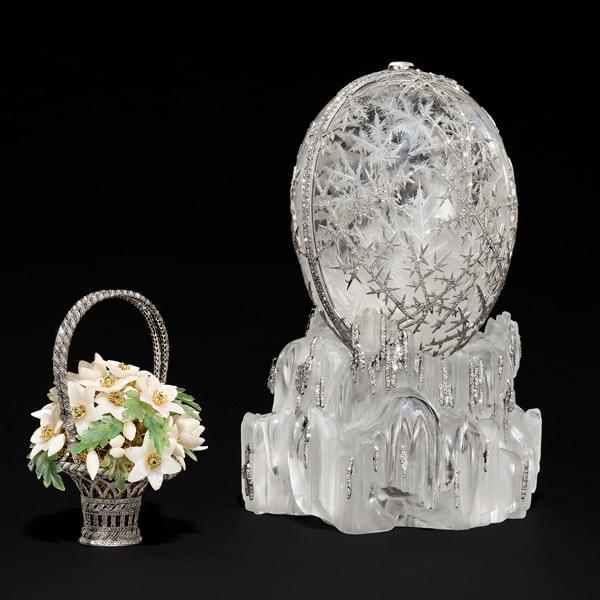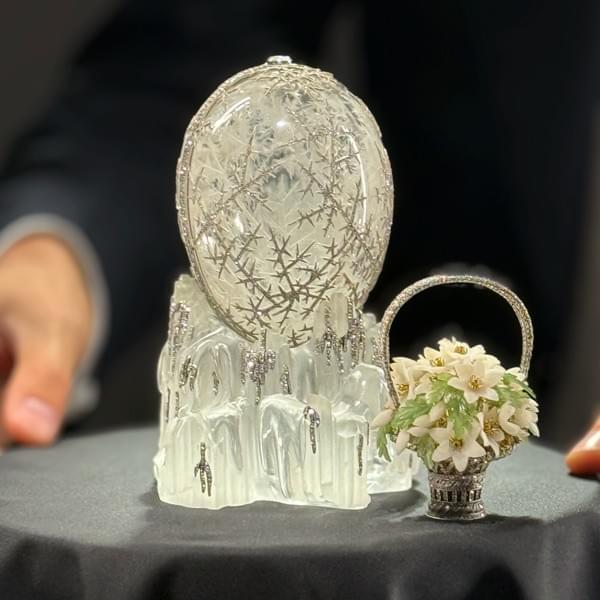
The jewelry world is holding its breath — and rightly so. For the first time in over two decades, one of Fabergé’s legendary imperial eggs is heading to auction, and this isn’t just any egg. It’s the Winter Egg of 1913, arguably the most exquisite of them all.
Set to go under the hammer at Christie’s London on Dec. 2, the Winter Egg carries an estimate of over $25 million, a massive leap from the $9.6 million it fetched in 2002. But even that number may be conservative — Fabergé fever has a way of rewriting auction history.

The Winter Egg of 1913, with the flowerpot of wood anemones that usually sits inside it
Commissioned by Emperor Nicholas II for his mother, Dowager Empress Maria Feodorovna, the Winter Egg has long been hailed as the pinnacle of Fabergé’s artistry. Crafted from rock crystal, platinum, and 3,246 diamonds, it captures the frozen majesty of a Russian winter in gemstone form. Inside lies its secret: a basket of white quartz wood anemones, their petals kissed with gold and demantoid garnet — a breathtaking detail designed by Alma Pihl, one of the few female artists in Fabergé’s storied workshop.
“This objet d’art embodies Fabergé’s legacy — the poetry of St. Petersburg in crystal and diamond,” said Sergei Mosunov, the brand’s new owner, after viewing the egg. “It inspires me to unite Fabergé’s past, present, and future.”
But the Winter Egg’s reemergence isn’t just about nostalgia or craftsmanship — it’s a cultural flashpoint. In a world where NFTs have faded and AI-generated art floods the internet, this century-old, hand-carved masterpiece feels almost rebellious. A defiant reminder that true luxury isn’t about scarcity — it’s about soul.
When the hammer falls in December, the Winter Egg won’t just crown a collector. It’ll mark the moment fine art’s coldest treasure became the year’s hottest story.
✨ Dive into AIDI’s “Design & Heritage” to explore how historic masterpieces like Fabergé’s Winter Egg continue to shape the future of jewelry artistry and collecting.
